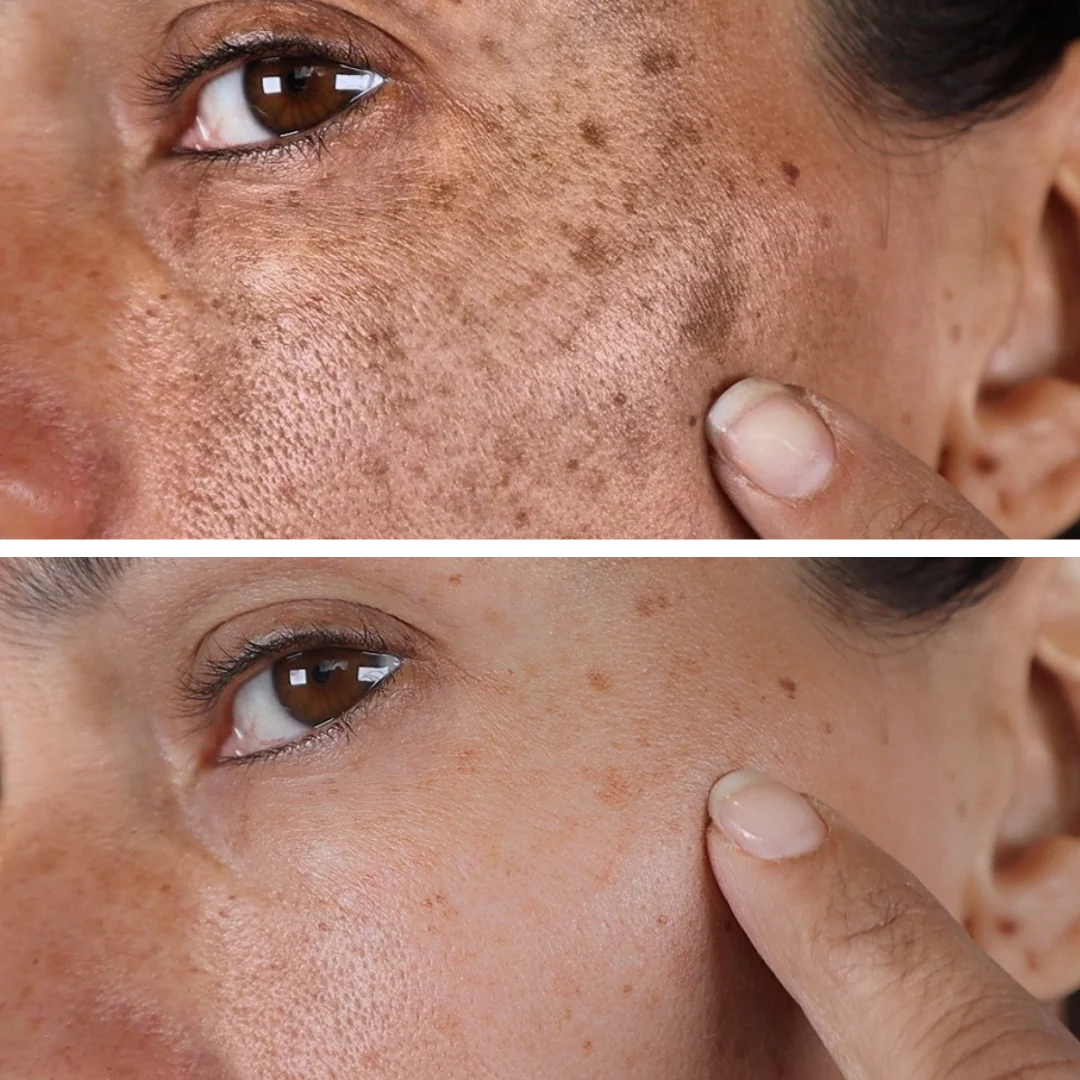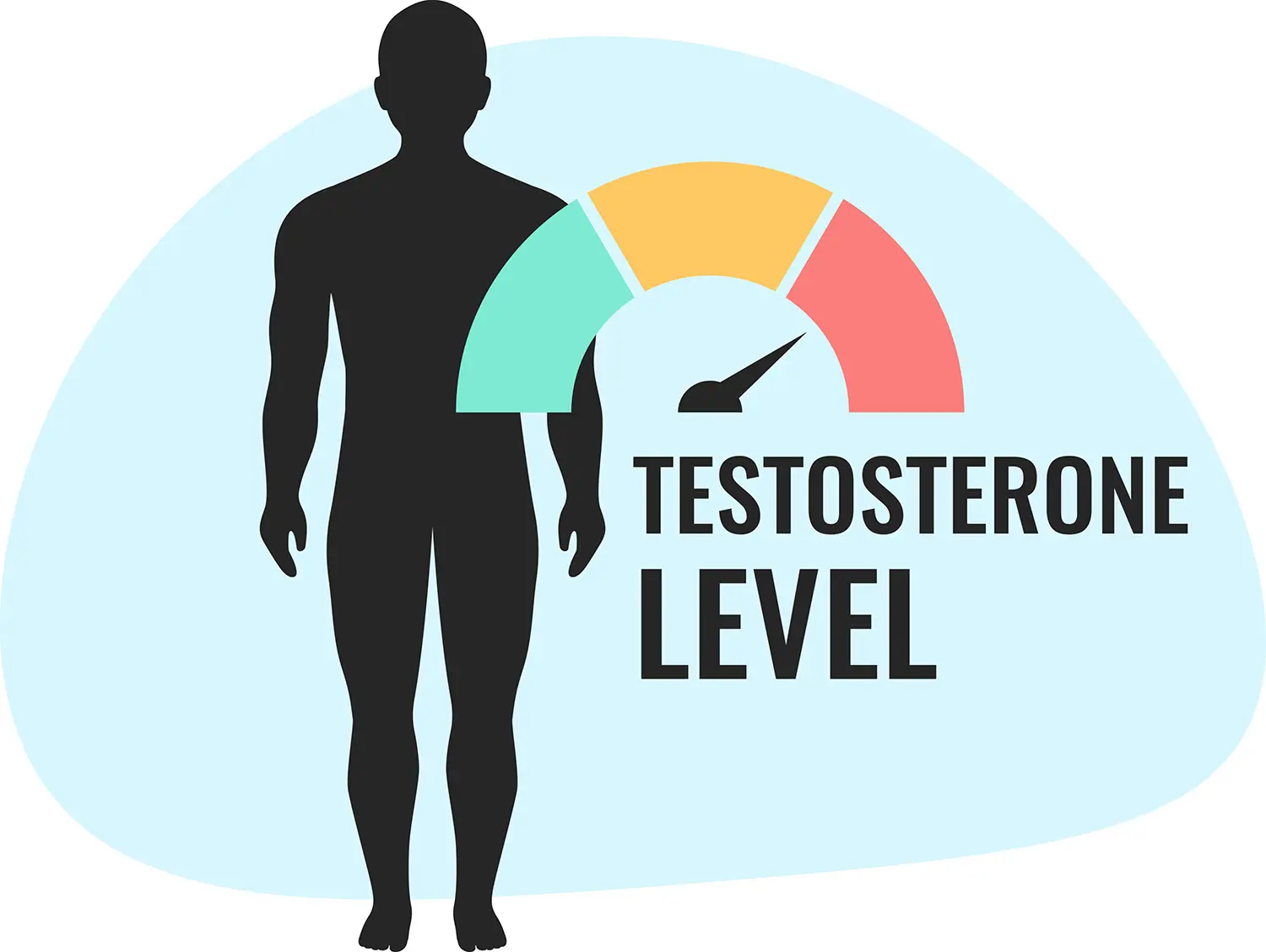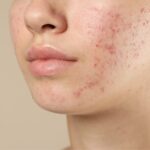Dark spots on the face can affect confidence and skin health. At DermonDemand, led by Dr. Alicia Atkins, board-certified dermatologists review each case to create a personalized plan. A dermatologist’s treatment for dark spots on the face combines medical expertise with targeted therapies to deliver safe and reliable results.
Key Takeaways
- Dermatologist treatment for dark spots on the face includes prescription creams, chemical peels, and laser therapy, each suited to different skin types and causes.
- Visible results vary by method, with creams taking weeks, peels showing changes in days, and laser treatments often requiring multiple sessions.
- Costs depend on the treatment choice, the number of sessions, and the skin condition, making a personalized evaluation essential.
- Preparing for a dermatologist visit by noting medical history, current skin care products, and key questions improves treatment planning and outcomes.
- Long-term success requires consistent sun protection, follow-up care, and lifestyle adjustments to prevent the development of new pigmentation.
Dermatologist-Recommended Treatments and Effectiveness
Dermatologists often begin with prescription and dermatologist creams. These products may include ingredients such as hydroquinone, kojic acid, or retinoids, which gradually lighten pigmentation. A dark spot removal cream by a dermatologist is stronger than over-the-counter skin care products and should be used under supervision to reduce side effects.
The best treatment for brown spots on the face often depends on the cause and the individual’s skin type. For sun spots or liver spots caused by UV light, a dermatologist may combine topical therapy with in-office procedures. Matching treatment options to skin tone helps reduce irritation while maximizing the treatment’s effectiveness.
Chemical peels and microdermabrasion are common choices for patients who want visible results in a short period. A chemical peel uses controlled exfoliation to remove damaged layers, while microdermabrasion smooths texture and evens skin tone. Both methods can treat post-inflammatory hyperpigmentation and mild skin conditions.
Laser treatment for dark spots provides precise targeting. Laser therapy uses concentrated energy to break down pigment and is effective for sun exposure damage. Modern laser treatments are safe for many skin types, though careful adjustment is needed to avoid complications. This approach can deliver fast results but may require multiple sessions.
Patients often ask about the top-rated dermatologist treatment for dark spots on the face. In practice, the most effective approach is a combination of treatments, including topical creams, chemical peels, and laser treatments, tailored to each individual’s specific needs.
Dermatologists evaluate the pattern of spots, whether they are caused by acne scars, sun exposure, or hormonal factors, before deciding how to treat dark spots on the face.
For those seeking a fast way to remove dark spots on their face, procedures like laser therapy or medium-depth peels can create noticeable changes within weeks. However, safety remains critical.
Each option carries potential side effects, such as redness, peeling, or temporary darkening. Dr. Atkins emphasizes that medical oversight is crucial to striking a balance between results and skin protection.
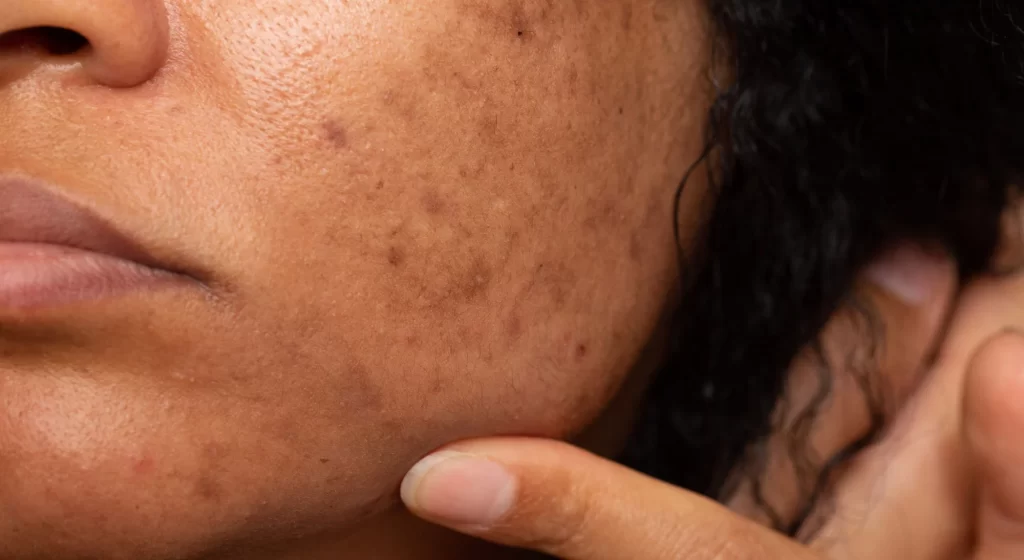
What to Expect During and After Treatment
Patients often want to know how long it takes to see results. With creams or skin lighteners, gradual improvement usually appears after several weeks of consistent use. A chemical peel may show visible changes in skin tone within days, while laser treatments often require multiple sessions for full effect.
After a chemical peel or laser therapy, mild side effects like redness, peeling, or swelling can occur. These typically resolve within a few days, though temporary darkening may happen before skin lightens. Following your dermatologist’s instructions closely helps reduce risks and ensures a safe healing process.
Most dermatologists’ treatment for dark spots on the face involves regular follow-ups. This allows your dermatologist to monitor progress, adjust treatment options if necessary, and make sure results align with expectations. Patients should plan for maintenance appointments, especially if sun exposure is frequent.
Cost of Professional Dark Spot Removal
The costs to remove dark spots on the face vary by method. Prescription creams may cost between $50 and $200 per month but require longer use. In-office procedures like a chemical peel typically range from $150 to $500 per session, while laser therapy can range from $300 to $1,500 per session, depending on technology and provider.
Factors that influence pricing include the type of technology used, the number of treatments required, and the specific skin conditions being addressed. Patients with extensive sun damage or deeper pigmentation often need more visits, which increases overall cost.
Doctor Visit Preparation Tips
Preparing before a dermatologist appointment can make treatment planning more effective. Write down when you first noticed your dark spots and any changes you have observed. Bring a list of medications, supplements, and skin care products you currently use.
It is also helpful to note past skin conditions, such as acne or post-inflammatory hyperpigmentation, as these can influence treatment choices. If you have a history of being exposed to the sun without sun protection, share this with your dermatologist. Such details help identify whether sun spots, liver spots, or other triggers are responsible.
Key questions to ask your dermatologist include:
- Which treatment options work best for my skin types?
- How long will it take to get visible results?
- What side effects should I expect, and how can I protect my skin during recovery?
These preparation steps allow Dr. Alicia Atkins and the DermonDemand team to design a safe and effective plan tailored to your needs.
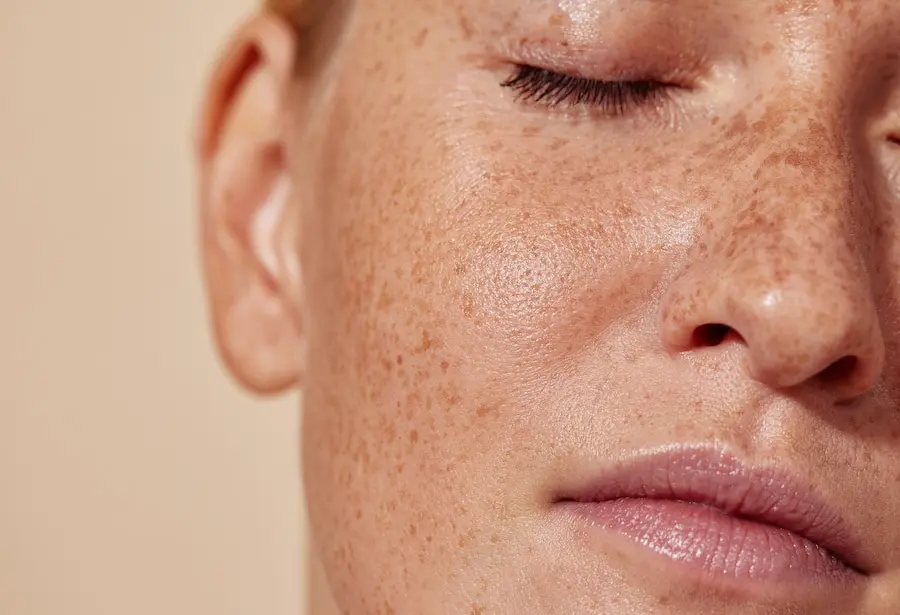
Finding Dermatologist Treatment Near You
When searching for dermatologist treatment for dark spots on the face near me, focus on board-certified professionals. Credentials ensure the safe handling of procedures such as laser treatments or prescription skin lightener therapy.
Key questions to ask before starting care include:
- What treatment options are most effective for my skin tone?
- How many sessions will I need?
- What are the possible side effects and recovery time?
Clear answers build trust and help you protect your skin throughout treatment.
Can You Remove Dark Spots Permanently?
Patients often ask if they can get rid of dark spots permanently. The truth is that results can be long-lasting, but maintenance is required, since skin exposed to the sun may develop new pigmentation.
For those wondering how to remove spots from the face in 2 days naturally, home remedies may offer temporary brightness but rarely deliver lasting results. Safe dermatologist treatments remain the reliable choice.
Some patients seek natural ways to remove age spots. While gentle exfoliation and sun protection can help, professional guidance ensures safe outcomes. Consistent skin care products combined with sun protection reduce the chance of recurrence.
Prevention and long-term maintenance strategies are essential. Use daily sunscreen to protect your skin from UV light, wear protective clothing when exposed to the sun, and avoid tanning beds. Regular check-ups with a dermatologist also help monitor for skin cancer and manage future pigmentation.
Causes of Dark, Brown, and Sunspots
Sun exposure is the leading cause of sun spots and liver spots. UV light damages pigment cells and creates uneven patches, especially in those often exposed to the sun without protection.
Acne scars and inflammation lead to post-inflammatory hyperpigmentation. These marks may fade slowly but often benefit from medical treatment options such as creams or light procedures.
Hormonal changes and certain medications can trigger pigmentation shifts. Different skin types react differently, which is why dermatologist guidance is essential in deciding how to get rid of dark spots safely.
Start Your Online Dermatology Plan
Book your private consultation with DermOnDemand to receive a personalized skin care routine for oily skin from board-certified dermatologists within 24 hours.


